The highly anticipated Find X6 series of OPPO’s annual imaging flagship was finally released. This time, OPPO stepped up its efforts to develop imaging. The OPPO Find X6 series brought a super light and shadow triple primary camera system, three lenses with different focal lengths. All have the photosensitivity and imaging capabilities of the primary camera of flagship mobile phones. You can also check Huawei Router AX6 here.
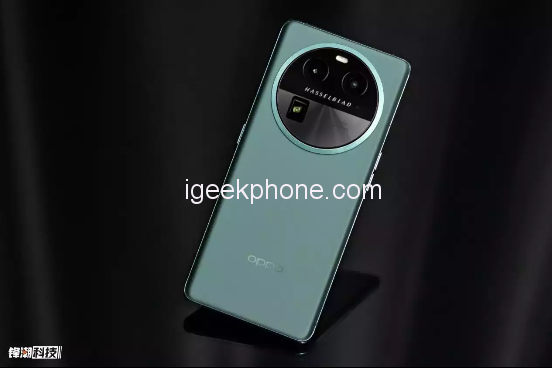
At the same time, OPPO proposed the concept of “light and shadow” that traditional cameras have always emphasized in computational photography. With the help of the super light and shadow imaging system’s most powerful ability to capture light information and the most powerful light and shadow computing ability, computational photography can be restored for the first time—natural light and shadow.
The author originally wanted to write a graphic review of the Pro versiThee Pro version, IT House made a video review ), but after a period of experience, I found that this time the OPPO Find X6 can play better than we imagined, Not only is it equipped with a periscope telephoto as standard, but the CMOS is also a 50MP IMX890 with standard main camera specifications, Mariana X chip and Hasselblad algorithm blessing, which makes the definitive version of Find X6 very different this time.
Next, the author will share the experience of this standard version with you.
Design & Screen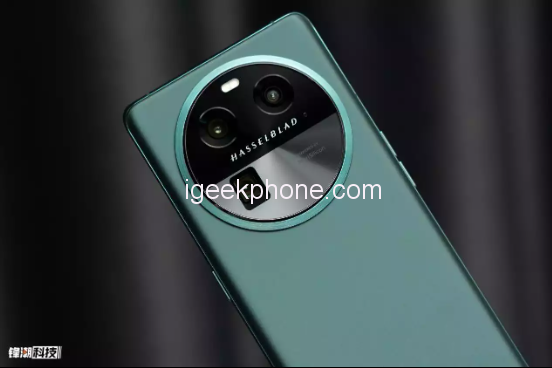
Compared with the previous two generations of Find flagships, the temperament of the OPPO Find X6 series has changed drastically this time. The streamlined, integrated body brought by the OPPO Find X3 and X5 series can make users feel that the products are “design-driven,” and with the vast ultra-light and shadow three main camera modules of the OPPO Find X6 series, people can draw a conclusion at a glance- this is a flagship machine that ultimately serves images.
Regarding color technology, OPPO Find X6 has brought three color schemes: Feiquan Green, Starry Sky Black, and Snow Mountain Gold.
According to official information, this color scheme adopts a low-flicker process and realizes a metallic texture on the frosted glass material. It is solid and challenging, and the high-frosted design is also anti-fouling and oil-resistant.
Regarding the author’s subjective feelings, “Feiquan Green” is like pine and cypress green. The low-saturation design adds a layer of gray tones, and the colors are naturally coordinated, ensuring sufficient recognition and not so jumpy g or parish. As a high-end machine, this color ID is worthy of the word “high-end.”
At first glance at the OPPO Find X6 series, you can’t ignore the vast, protruding round module on the back. There are three amazingly sized cameras in the ring of the universe mirror. This design brings a robust Professional image experience. To put it more bluntly – one look at the lens and you know this phone can take pictures.
In terms of details, there is a high-gloss brushed metal ring outside the universal lens ring of OPPO Find X6, which connects the rear shell of the fuselage and the module lens glass. The upper and lower parts of the circular lens are divided into two, the upper part is black, and the lower part is metallic, with countless delicate metallic patterns spreading outward from the center.
Compared with the restrained and restrained design of the previous generation of Find, creating the OPPO Find X6 series is a bit flashy, but the entire video module is not intrusive in the CMF design of the whole machine but has a very harmonious high-end and atmospheric technology. Beauty.
OPPO Find X6 uses a 6.74-inch full-screen with a resolution of 2772*1240, supports 1-120Hz intelligent dynamic refresh, 1.07 billion colors,10bit full-link color management, and 100% DCI-P3 color gamut coverage, etc.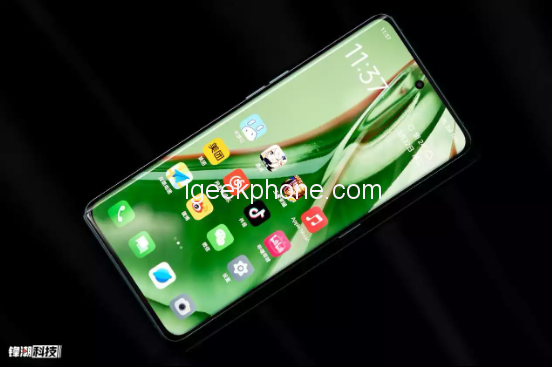
The specs for this screen are pretty high. More importantly, the OPPO Find X6 series brought the ” Pro XDR display “this time. The Pro version has a fantastic peak brightness of 2500 nits, setting a new record for the mobile phone screen’s brightness, while the standard version’s peak brightness has also reached 1450 nits.
Such a high-brightness and high-standard screen is also for “image” services to a certain extent because, in the system, the OPPO Find X6 series has added a new “Pro XDR display” function, which can display the light source, sky, and other highlights in the sample. The area is highlighted to restore the picture’s dynamic range to the most realistic level and make the image more three-dimensional. We will talk about this part later.
As a high-end flagship, the middle metal frame is also essential. The OPPO Find X6 metal middle frame adopts the same color design as the rear shell, and it has a look and feels close to stainless steel after high-gloss polishing.
The top of the OPPO Find X6 adopts a flat design, decorated with the same color glass as the body, and the openings include speakers, infrared, and microphones.
The power button is located on the right side of the fuselage, also embellished with the iconic green bar. The bottom is flat, including speakers, charging ports, SIM card slots, and microphones.
In terms of size, the weight of the standard version of Find X6 has also exceeded 200g this time, reaching about 207g, and the thickness of the body is 8.96mm. This data is not light and thin, but it is still wholly acceptable considering the internal hardware stacking of the phone itself.
In addition, although the lens module of OPPO Find X6 looks thicker, the whole machine is not too top-heavy, and the overall grip is relatively good.
Cameras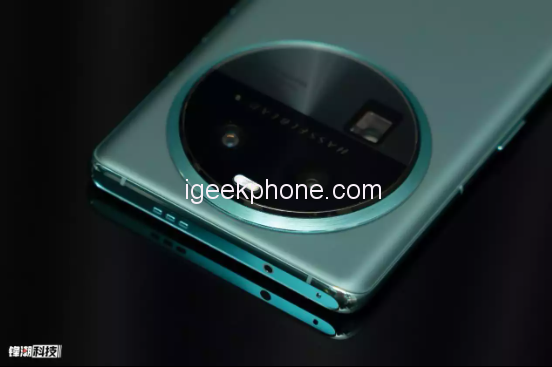
As early as the OPPO Find X3 series, OPPO proposed too many main camera concepts. At that time, the flagship wide-angle primary camera and ultra-wide-angle used IMX766, 50 million pixels, 1/1.56-inch super large photosensitive area. That is pretty good imaging. On the latest Find X6 series models, OPPO has made great efforts at the telephoto end and shouted the slogan ” eliminate the concept of mobile phone main camera ” to the entire mobile imaging field because on the OPPO Find X6 series, the specifications of each lens, They are all master-level:
- Ultra-sensing periscope telephoto: 50MP IMX890, 1/1.56” photosensitive area, F / 2.6 aperture, suspended prism anti-shake, 3x zoom (equivalent focal length 65mm) & 6x optical quality zoom;
- 50-megapixel outsole wide-angle: 50MP IMX890, 1/1.56” photosensitive area, F / 1.8 aperture, OIS anti-shake, equivalent focal length 24mm;
- 50MP ultra-wide-angle: 50MP JN1, 1/2.8” photosensitive area, F/2 aperture, equivalent focal length 15mm.
Specifically, the periscope telephoto and outsole wide-angle OPPO Find X6 are 50MP IMX890. This lens has recently appeared in many Green Factory flagship phones, including OPPO Find N2. OPPO’s polishing is naturally “handy.”
The ultra-wide angle is 50MP JN1, and the large aperture of F/2 ensures sufficient light intake. Let’s take a look at the super wide-angle proofs:
The most surprising thing is that the 3X optical zoom periscope lens on OPPO Find X is the same as the wide-angle camera. And based on the feature that its sensor supports four-in-one pixels, you can directly select the 12-megapixel area in the middle of the sensor to produce a 6X zoom photo comparable to the quality of optical focal lengths, which allows Find X6 to directly cover the most commonly used medium and long focal lengths. The outsole integrates the OPPO algorithm, which maximizes the low-light shooting ability of the periscope telephoto, making the mobile phone telephoto “cross light and dark” for the first time.
It is no exaggeration to say that this is the strongest periscope telephoto of the current standard version of the mobile phone. Even if it is compared with the ultra-large cup of friends, it is also very competitive.
Ever since I experienced the super light-sensing periscope telephoto on OPPO Find X6, the author even ignored the existence of the “main camera” for a while and took almost all the proofs this super light-sensing periscope telephoto took nearly all the proofs because it The picture quality is outstanding. The sharpness, color, and light and shadow performance are close to those of the flagship primary cameras of other companies. Coupled with the natural composition advantage of the 65mm equivalent focal length, it is a photographer who can quickly shoot blockbusters.
I am letting “telephoto across light and dark,” whether day or night, can have excellent filming effects, a significant upgrade point of OPPO Find X6 in terms of imaging. The third is to allow computational photography to restore natural light and shadow for the first time.
“Light and shadow” is a compulsory subject for traditional cameras. Capturing light and shadow is the process of creating art and university knowledge. Over the years, with the rapid development of mobile phone imaging, especially the emergence of the concept of computational imaging in recent years, many manufacturers have begun to ignore the most critical “light and shadow relationship” in photography.
The image quality of many flagship mobile phones is compelling. The high resolution brings super-resolution, and the outsole becomes a cinnamic range. You can’t deny these phones can show super image power in any scene. But in many cases, the proof that the algorithm is too strong cannot stand scrutiny. Although the evidence slightly increases the saturation to make the p look very “flavorful,” “it is like a handful of coriander that is not seasoned enough. To put it more bluntly, it almost “feels”.”This so-called “feeling” is subtle and metaphysical, but it is real – the objective and nuanced relationship between the subject, environment, and light, and the three-dimensional world outlined by natural light.
For example, when we shoot some backlit proofs of people, some large-bottomed image phones will show a mighty dynamic range, the sky highlights are tightly suppressed, the shadows and dark details of the faces of the characters are all brightened, and the brightness of the front and the sky are consistent. This overly violent HDR algorithm and excessive sharpening will make the picture look unreal, very flat, not three-dimensional, and lose the three-dimensional effect brought by light and shadow. What is presented is a ” digital taste ” brought by a robust algorithm. “.
Another example is the most common night environment where computational photography is “powerful”.”Many mobile phones will show the effect of night vision goggles beyond what the human eye can see. But OPPO believes it is not to make night into day but to supplement the light and shadow under the night and improve the quality of works created under dark light.
IPPO’s intentions in this regard can be celt on last year’s Find X5 series mobile phones. The author mentioned in the evaluation of the Find X5 series that in most night environments, the Find X5 series will not be a brainstorm. Increase the brightness, but the separation of light and dark forms a strong sense of night scene atmosphere.
The so-called digital taste is like industrial alcohol, which has a large amount is power and a wide range of application scenarios, but in the final analysis, it is an industrialized product under the “algorithm,” “not for you to “taste”.”The “light and shadow sense” that OPPO focuses on is more like an old wine. It smells good, and the aftertaste is long-lasting after two sips.
Therefore, the OPPO Find X6 series has brought a super light and shadow imaging system, which is described in official terms – let light, the existence of the three-dimensional world, shine into two-dimensional photos for the first time, allowing moving images to break through the shackles of the plane, presenting a sense of three-dimensional, spatial and A realistic picture with a sense of immersion. Among them, the new super light and shadow image engine calculates the more authentic and natural light and shadow relationship of the subject, light, and environment, while Mariana X is responsible for powerful computing power support.
Let’s analyze the following sets of proofs in detail:
The first is the 3X proof shot by the super light-sensitive periscope lens in the picture above. Hitting a corner of the coffee shop, there is a light strip mapping on the glass wall and a warm light source on the top, and the entire shooting environment is also in a relatively dark light condition.
The proofs show a solid visual hierarchy with the help of the OPPO Find X6 lens and the super light and shadow image engine algorithm. For example, the exposure of the wall above is just a bit of overflow. The glass cabinet in the dark part did not increase the brightness violently, and the dim light area behind the bottle is also “dark” just right. The brightness difference between the high light and the dark part is sufficient, and the high light part of the wall and light forms a strong contrast with the glass and transparent parts. , the brighter areas are brighter, and the darker areas are more pure, so the proofs show a strong sense of transparency and three-dimensionality.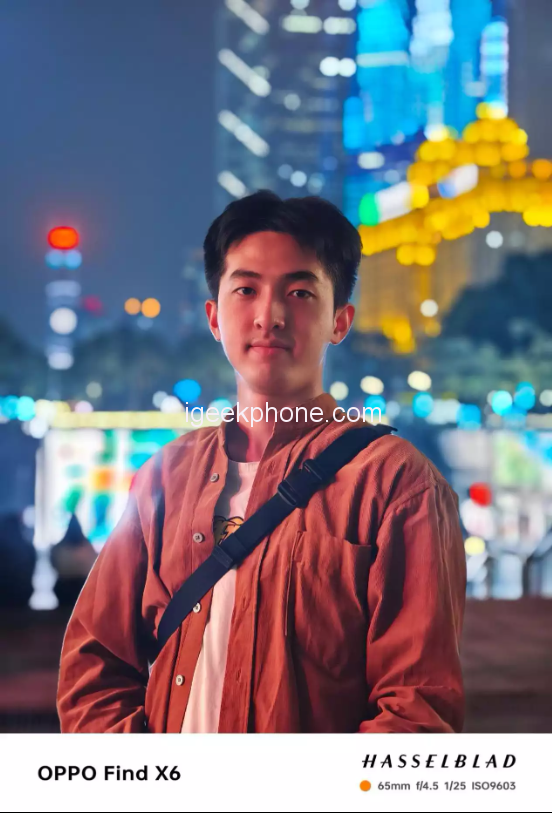
Another example is the above fruit sample taken by the primary camera. Under the light, the oranges reflect the light source from the top. Each orange is very bright, with undeniable highlights and reflections. It looks “greasy,” and the outline of the apple is also very three-dimensional.
The sample looks very textured, the colors are delicate and natural, and the pics are vivid and transparent. Through this photo, you can truly feel the “three-dimensional” world.
More importantly, the proofs you see now are more three-dimensional and have a stronger sense of space when presented on the Find X6 phone.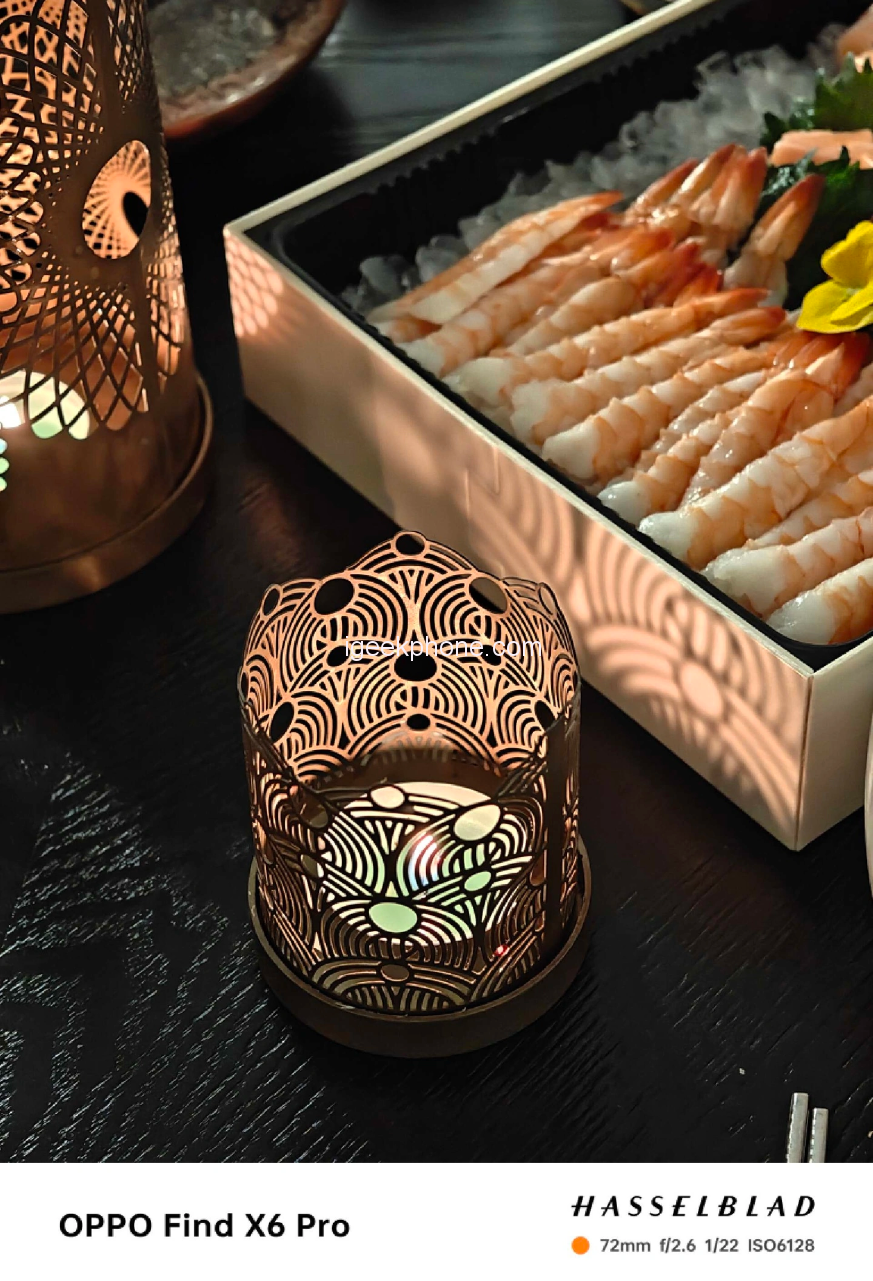
This has to talk about the Pro XDR mentioned above. Thanks to the higher screen brightness, the above proofs can present a more three-dimensional picture of the Find X6 series mobile phones and further improve the dynamics of the parts.
IA”Pro XDR” button will appear at the bottom of some hhigh-dynamicrange pictures. in the photo album, Press and hold to experience the before and after comparison of turning off Pro XDR.
The gif is for demonstration only; the natural effect is more obvious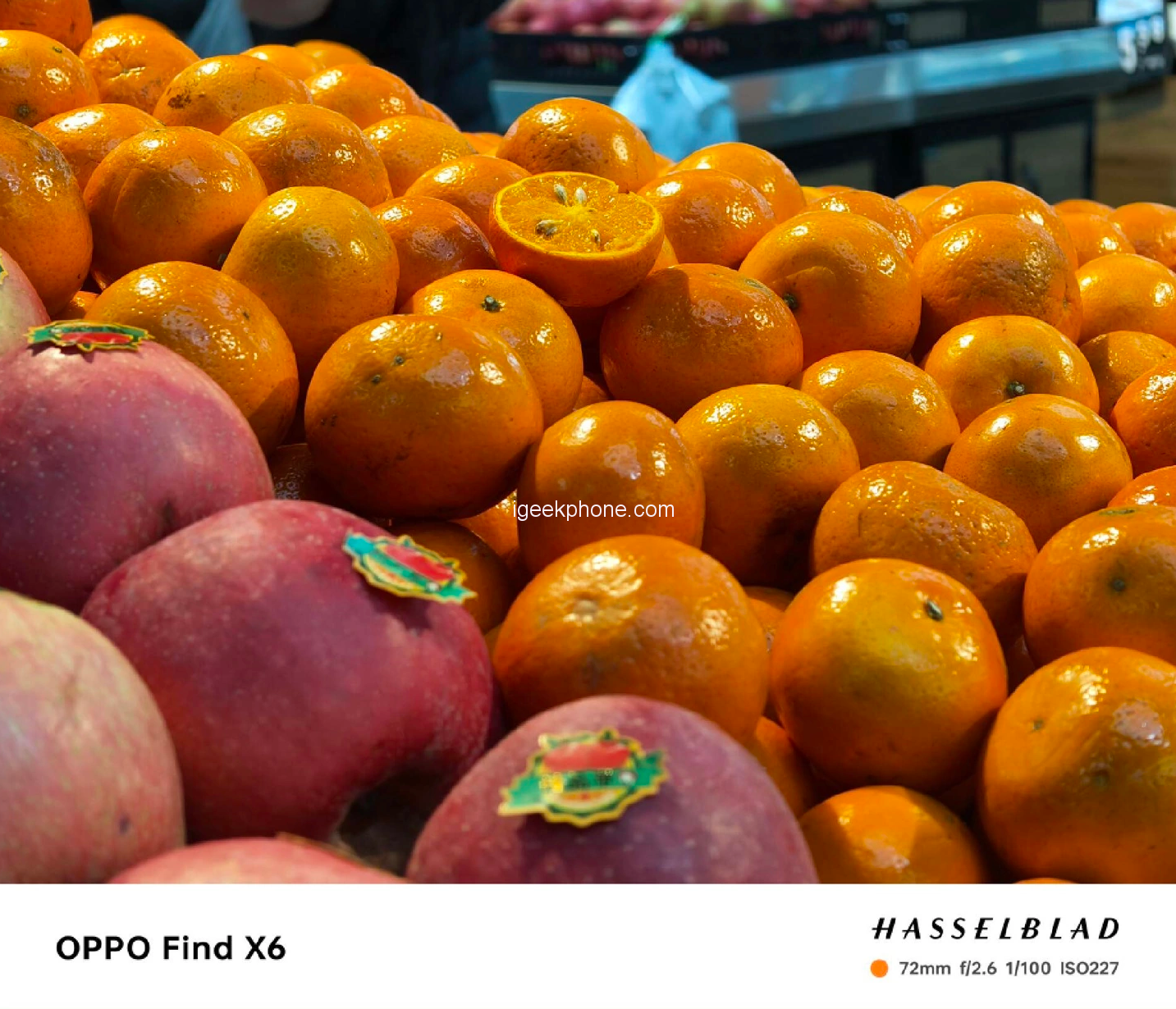
By default, “Pro XDR” is turned on in the album, the picture is more three-dimensional, the highlights are brighter, and the contrast between light and dark in the photo is even more vital.
But it is a pity that all the proofs we have seen in this article are the effect of turning off “Pro XDR.” “Because all current software does not support HDR format image display, the “Pro XDR” visual effect can only be experienced on OPPO Find X6 mobile phones. This is true – a moment exclusive to oneself.
So how did OPPO achieve it?
Official information shows that the Find X6 series will simultaneously record 12 million photons dot matrix useful information when shooting, but the standard dynamic capabilities of traditional photos are limited and cannot display the additional 12 million photon dots. The matrix technology allows the Find X6 series to have a “light and shadow line,” which allows the brightness of the recorded photons to be accurately mapped to the screen, presenting a more realistic light and shadow effect.
This is why the peak brightness of the Find X6 series screen is so high this time-just to serve the image.
Finally, let’s talk about the portrait of OPPO Find X6.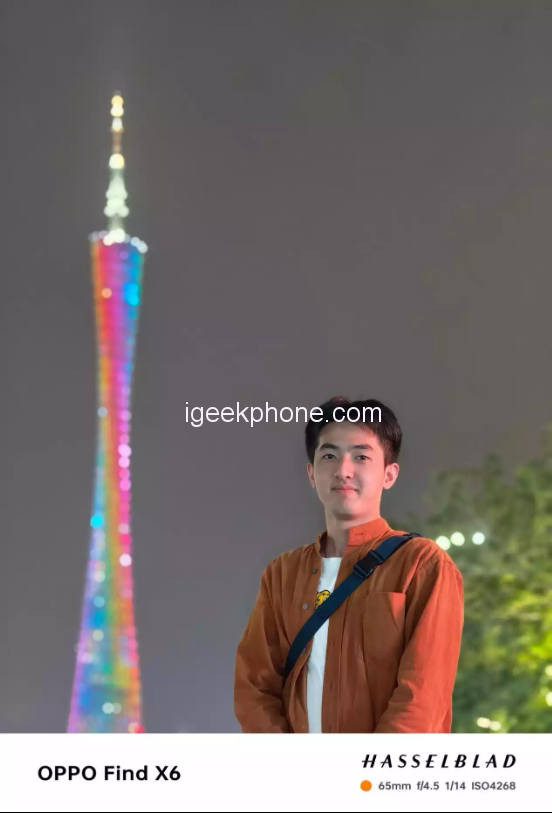
To be honest, for a long time, the author has paranoidly believed that the 2X independent lens + Zeiss filter of the blue factory next door has no rivals in the shooting of telephoto portraits. After experiencing the OPPO Find X6 series pictures, this view has completely changed.
Especially the portrait of Find X6, as a standard mobile phone, the portrait shooting is also so top it is scarce
According to official information, the portrait mode of the Find X6 series has been upgraded to the Hasselblad portrait mode and simulated the Hasselblad classic medium format lenses XCD30 and XCD80, respectively. The equivalent focal length of OPPO Find X6’s 3X portrait is 72mm, which is very suitable for shooting people, and it is also easier to compose pictures and make them more transparent.
The equivalent focal length of OPPO Find X6’s 3X portrait is 72mm, which is very suitable for shooting people, and it is also easier to compose pictures and make them more transparent.
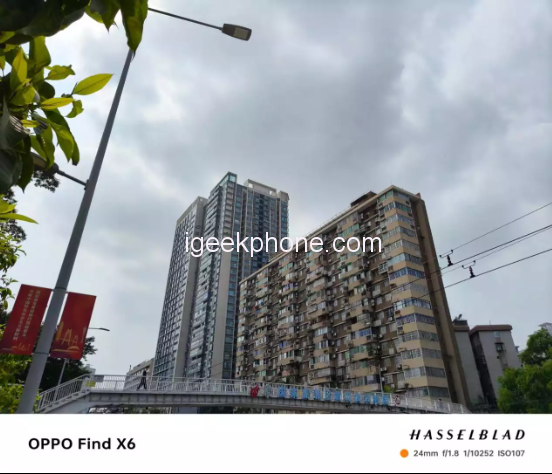
From the experience point of view, the Find X6 series achieves an absolute progressive blur with a very natural depth of field effect, and it isn’t easy to find the existence of algorithm traces. Moreover, Hasselblad portrait mode has a new spot effect, so the spots have the correct spatial and natural strength relationships.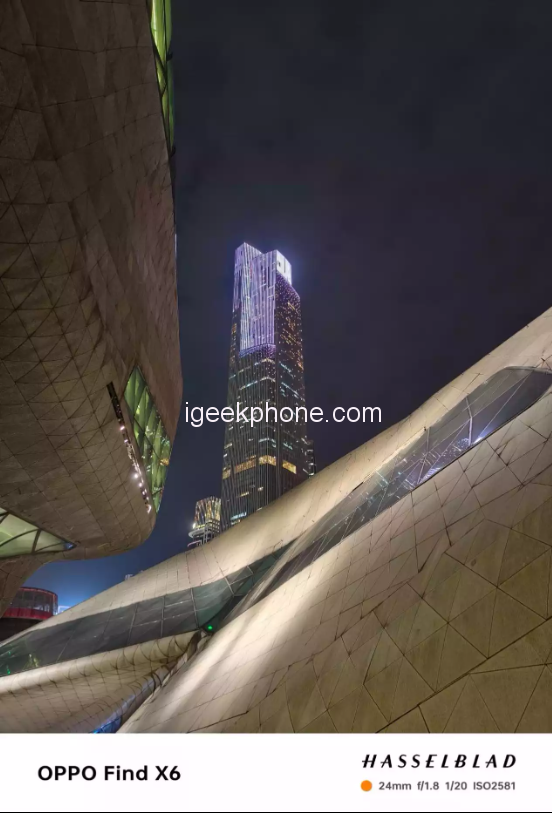
The three built-in Hasselblad master filters in the Find X6 series are also very top-notch. For example, the picture below was taken with the master portraiture. The whole tone is slightly more relaxed, with a film-like texture. It will turn you into an old humanistic master in minutes.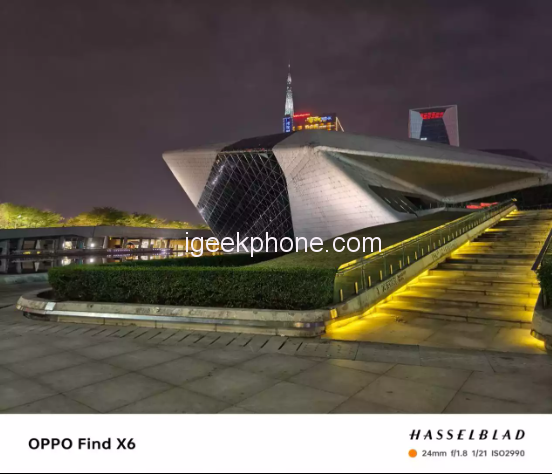
In general, this time, OPPO Find X6 has a massive upgrade in terms of imaging, such as the “three main ca, meras” on the hardware, so that no matter which focal length you are in, no matter which lens you use, you can get the shooting effect of the “main camera” Including the ultra-light-sensing periscope lens that has almost no rivals at the same level, it will allow you to change the usage of the periscope telephoto, and stimulate your desire to shoot every moment.
More importantly, the “shade sense” emphasized by Find X6 makes each photo have a firm texture, and it will present high-quality works brought by real and natural light and shadow effects in various scenes.
Hardware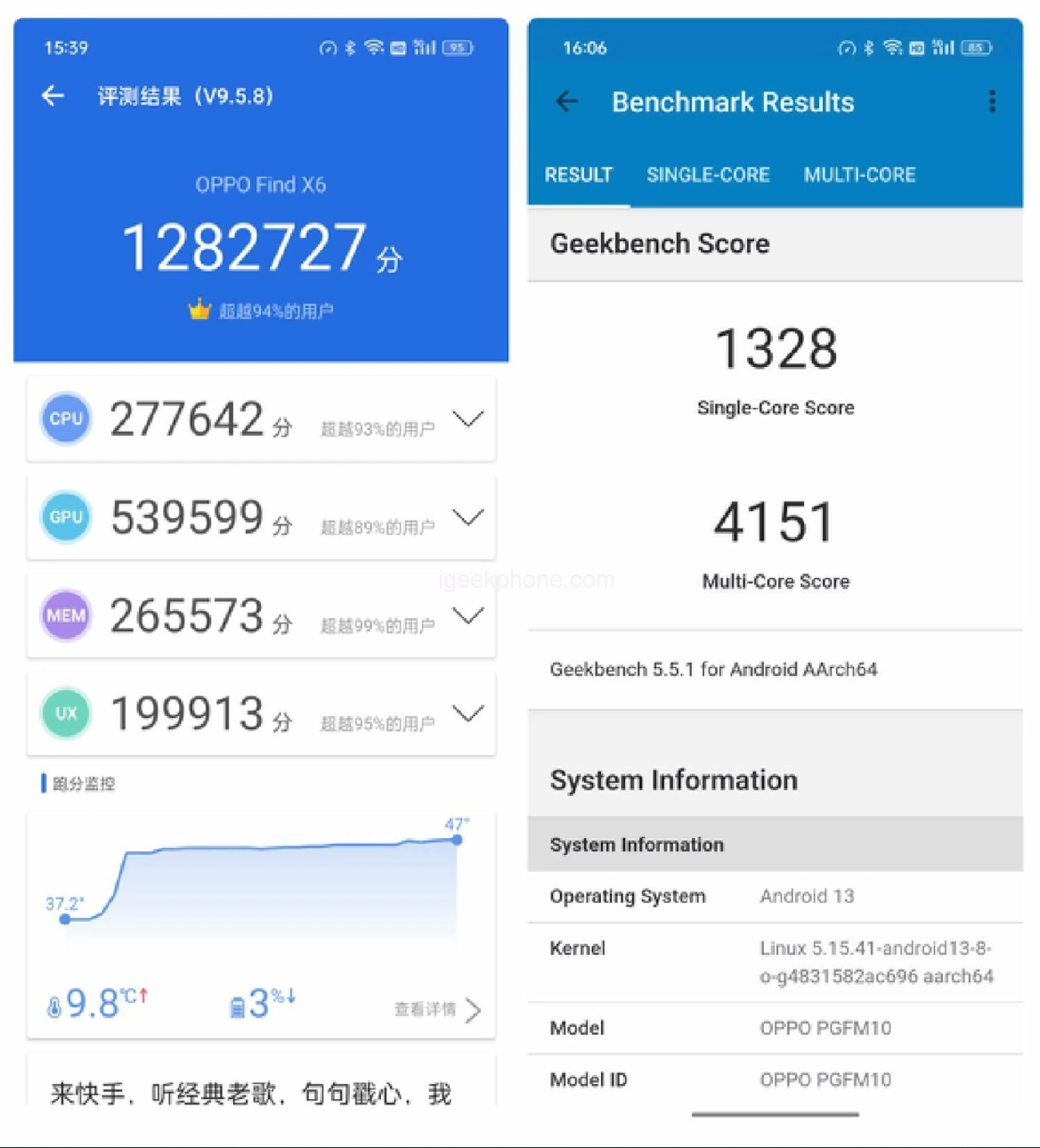
OPPO Find X6 is equipped with MediaTek Dimensity 9200, which provides LPDDR5X / UFS4.0 (12+256, 16+512) storage specifications and the self-developed ColorOS supercomputing platform blessing, which further stabilizes the release of performance. The battery capacity is 4800mAh and supports 80W wired super flash charging.
Briefly talk about MediaTek Dimensity 9200.
As the industry’s first processor using TSMC’s second-generation 4nm process, it integrates 17 billion transistors. In terms of architecture, Dimensity 9200 is equipped with a 3.05GHz Cortex-X3 super large core, three 2.85GHz A715 large bodies, and four 1.8GHz A510 tiny hearts. Both super-large cores and large cores support pure 64-bit applications.
According to official tests, compared with Dimensity 9000’s GeekBench 5 CPU, Dimensity 9200 has a 12% increase in single-core performance, a 10% increase in multi-core performance, a 10% increase in heat dissipation, and a power consumption reduction of up to 25% under the same version. In terms of GPU, it is equipped with Immortalis-G715 flagship GPU, which supports mobile hardware ray tracing technology.
Let’s take a look at the running points of OPPO Find X6 first.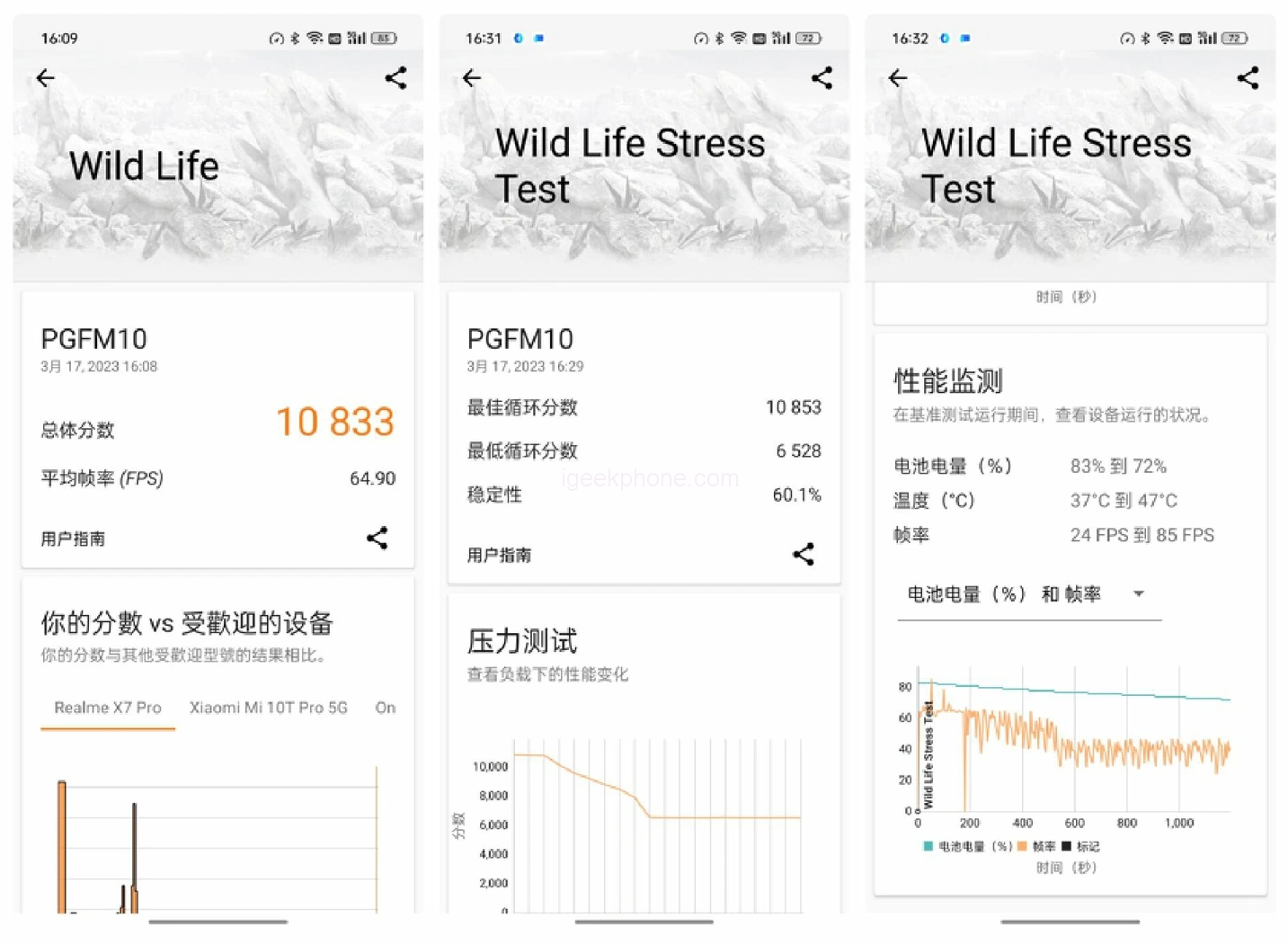
The first is AnTuTu. The OPPO Find X6 has an overall score of 1.28 million+, about 60,000 points higher than the Dimensity 9200 of its neighbor, and the running score is quite good. Compared with the previous generation, Dimensity 9000, there is a gap of about 280,000 points, and the performance improvement is pronounced.
However, on GeekBench 5, OPPO Find X6 scored 1328 single-core and 4151 multi-core. The multi-core score is slightly lower than expected. Maybe it is a system firmware problem?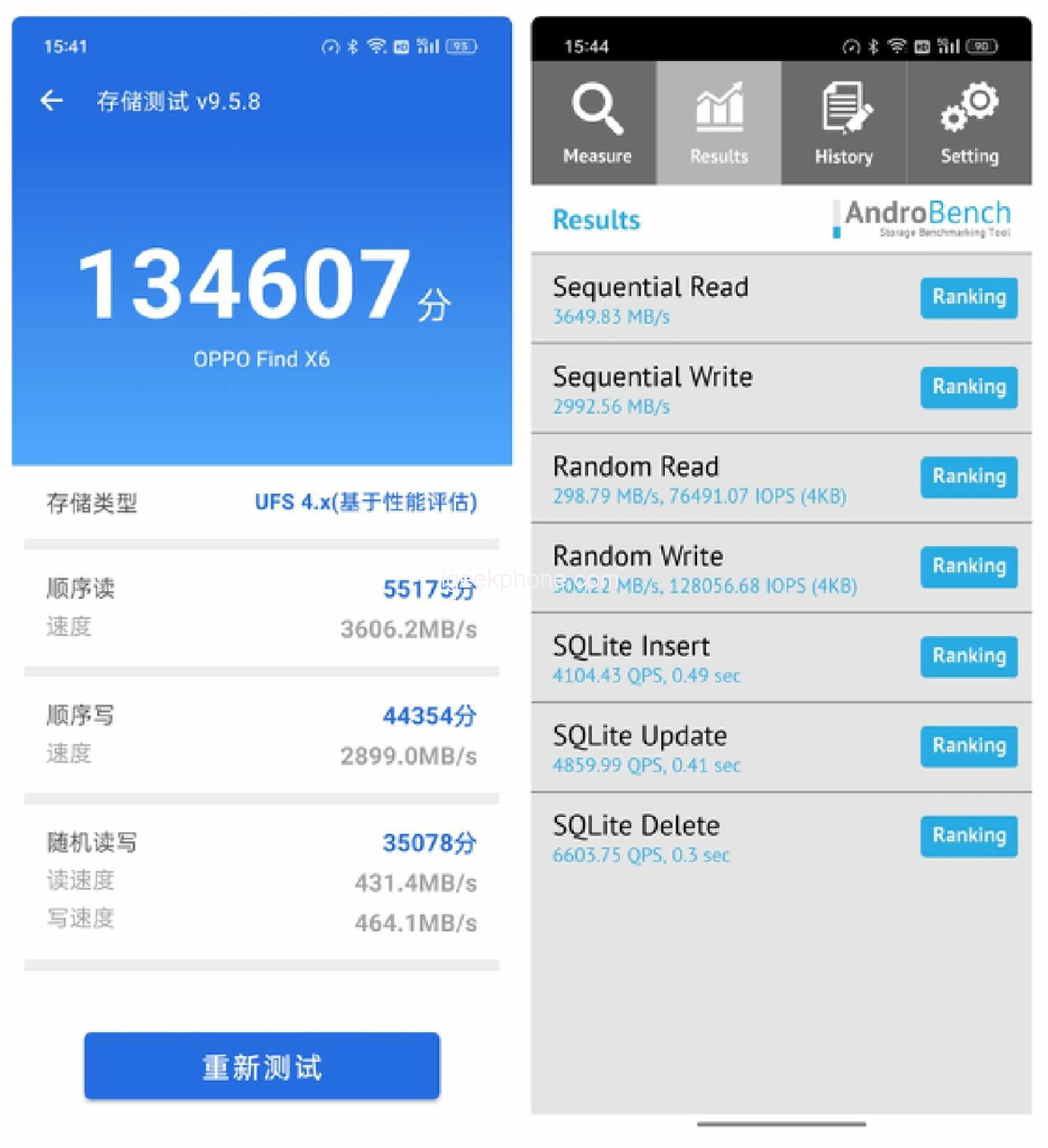
After 20 consecutive rounds of 3D Mark Wild Life, the stability of OPPO Find X6 reached 60.1%. The single-round Wild Life running score went 10833, and the average frame rate was 64.90fps, which is still the current flagship level. The stability of 60.1% also proves that training was a little more “radical” in the past.
Let’s also storage test again.
With UFS4.0 support, OPPO Find X6 ran a reading score of 3649MB/s in Androbench, and the writing score reached 2992MB/s, far exceeding the 1800MB/s score of UFS 3.1. In the storage test, the score went 130,000+, significantly improving compared to UFS 3.1.
For simple running tests, next, we use the “Yuanshin God” game for actual testing.
Turn on the e-sports mode of OPPO Find X6, 35 minutes of “Yuan Shen” with the highest quality and highest frame rate, turn off motion blur, choose the scene of running in the Wild + fighting monsters, and the battle scene takes up about 40% of the time.
The test results show that the average frame rate of OPPO Find X6 is 59.64fps.
OPPO Find X6 Yuanshin 30 minutes frame rate 59.64fps
As shown in the figure, in the 35-minute “Yuan Shen” game, OPPO Find X6 did not lock the frame throughout the process. When encountering a battle scene, the frame rate generally drops to 55fps, and there is rarely a cliff-like frame drop.
The 35-minute “Original God” is a high-load scene, after all. Regarding core fluctuations, the main force is the Cortex-X3 super core and tRegardingores.
The heat generation performance of OPPO Find X6 is also relatively good. The highest temperature measured does not exceed 40°C, and the heat is concentrated in the upper left of the screen. Fever exists, but within an acceptable range; this performance is relatively excellent among the flagship phones.
ColorOS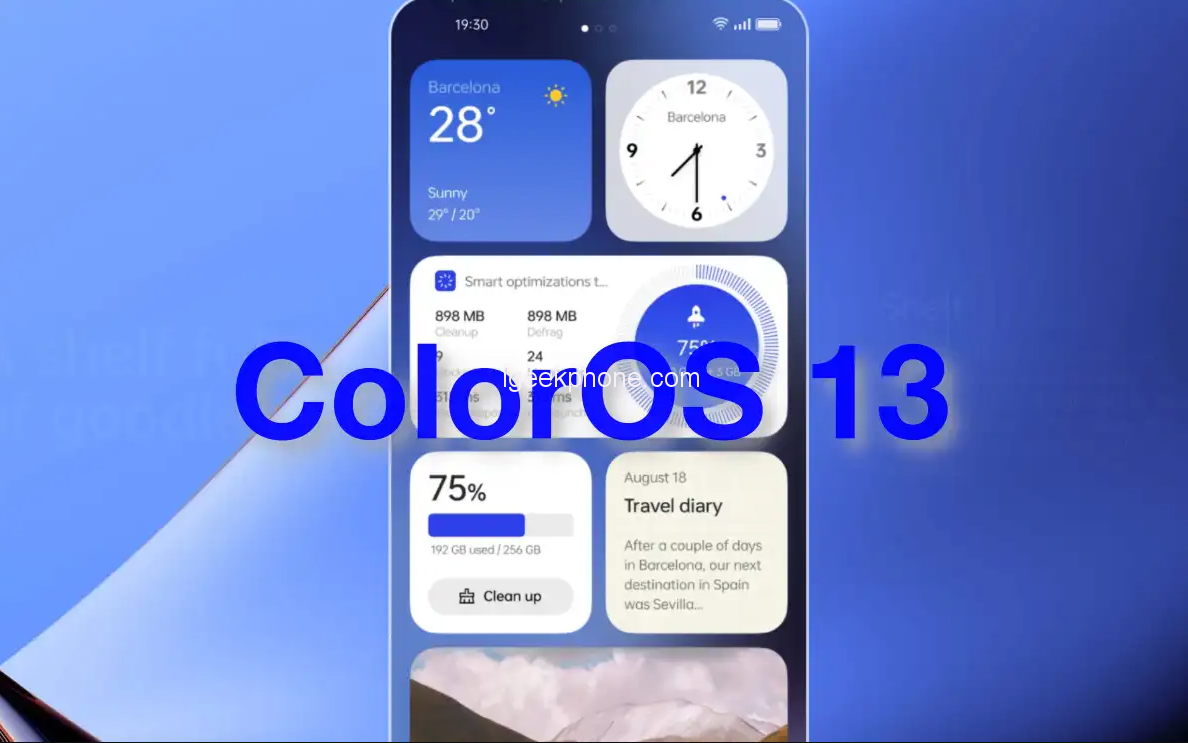
OPPO Find X6 is equipped with a new system. ColorOS 13.1 focuses on adding a multi-screen collaborative experience. It is also the first launch of OPPO’s self-developed cross-terminal system Pantanal.
Specifically, with the OPPO Pad2 tablet, OPPO Find X6 can realize trust and collaborative flow across devices, including four significant capabilities: cross-screen mirroring, content synchronization, application relay, and communication sharing.
The operation is also quite simple. OPPO Pad 2 is paired with the brand-new OPPO Find X6 series mobile phone (supporting ColorOS 13.1 and above), and you can log in with the same account without being in a local area network. In the cross-screen interconnection settings, turn on Bluetooth and find the device to be connected. Can.
For example, for functions such as “app resume,” the unfinished work on the mobile phone, the relay will start immediately after turning on the tablet and continue from where it was just interrupted.
Take OPPO’s default browser as an example. At this time, a browser icon will appear in the lower right corner of OPPO Pad2. After clicking, the browser of OPPO Pad2 will connect to the content of the mobile browser.
When the OPPO Find X6 series mobile phones and the OPPO Pad2 tablet are “interconnected”, they also support “multi-device content transfer.” For example, pictures, vi,”,” os, and even screen recordings and screenshots ta.”n on the mobile phone will be transferred to the tablet;
After OPPO Find X6 takes a photo, Pad2 will receive a notification on whether to save it and click to save it to the tablet.
ColorOS 13.1 also supports “cross-screen mirroring.” After it is turned on, the mobile phone can “cast” the screen to the tablet. The tablet can directly operate all the content on the mobile phone. File transfer can also be achieved by dragging and dropping between the mobile phone and the tablet.
Another central upgrade point is ” non-inductive communication sharing. ” The experience is similar to Huawei’s “distributed network sharing.” In simple terms, it is to allow tablets to have the same communication capabilities as mobile phones.
After interconnection, as long as the mobile phone is near the tablet, the tablet can connect to the 5G network of the mobile phone without any sense and realize surfing the Internet, making and receiving calls, sending and receiving text messages, and receiving mobile application push messages.
When the mobile phone and the tablet are connected, the mobile signal will appear in the upper right corner of the tablet:
This also means that at this time, the tablet can be like a mobile phone, capable of mobile Internet access, sending text messages and answering calls are all easy:
OPPO Pad 2’s “non-inductive communication sharing” technology supports long-term connection when the screen is off. When the tablet is in the off-screen state for a long time, it is still connected, and the text messages and calls of the mobile phone will not be missed.
Secondly, it supports verification code SMS synchronization, which has many application scenarios. OPPO Pad 2 can also quickly fill in verification codes and one-click login functions like a mobile phone.
In terms of experience, compared with hotspots on mobile phones, the most significant advantage of OPPO Pad 2’s “non-inductive communication sharing” lies in its low power consumption. There is no slight heating phenomenon, and the power consumption is the same as that of daily use. The second is the complete “transplantation” of mobile phone communication capabilities to the tablet terminal, which traditional hotspots cannot realize.
In addition, this time, the OPPO Find X6 series also added a “portable workbench” function, w new cross-terminal file management and tablet platform carried by OPPO. It is still in the Beta version—the OPPO Find X6 series and the OPPO Pad2 tablet—the function.
After turning on the portable workbench, log in to the website of the workbench through a browser to view all files and materials on the tablet and mobile phone, including pictures, videos, and even audio, compressed packages, installation packages, etc.
This function is efficient. For example, when the author wrote the evaluation of OPPO Find X6 and Pad2, all the pictures and screenshots in the device were imported to the PC through this function.
In terms of other experiences, ColorOS 13.1 also brings the ColorOS bright reminder function, a suitable interface and time, and a convenient interactive method to allow information to reach users directly; aspects such as call privacy protection and smart meetings have been upgraded. , so I won’t go into details one by one.
Verdict
Very few standard mobile phones can excite me so much regarding imaging, and OPPO Find X6 is one of the few. On this product, you can see the confidence of OPPO in developing telephoto images and the spirit to shout “from multiple cameras to full master cameras.” At the same time, the accumulation of the self-developed chip Mariana MariSil.” .” on X and the technical precipitation of the Hasselblad color algorithm have been presented on this product in stages.
More importantly, in this era that generally emphasizes computational photography, in this “flat world” that is “fed” by digital aesthetics, OPPO took the lead in “picking up” traditional cameras that have been held for decades. The concept of light and shadow began to polish the subtle light and shadow changes on the mobile phone image and made a tone style that pays more attention to users’ subjective feelings.
Of course, regarding the evaluation of “digital taste,” the author does not hold a negative attitude because this is also a game between “rationality” and “sensibility” because of the different image concepts and aesthetic differences of other mobile phone manufacturers.
But the author is also more willing to see that a brand like OPPO can lead in making more “sensual” choices in mobile imaging and computational photography, allowing photography to return to the image itself.
Returning to the OPPO Find X6 product, this standard mobile phone has a balanced overall quality and a high image experience. If you love photography, in the past, only super-large models may meet your needs, but with the OPPO Find With the release of the X6, this may be your more cost-effective choice.
Read Also: Oppo K10 VS Redmi Note 11T Pro: Which One is the Better Buy?
Do not forget to follow us on our Facebook group and page to keep you always aware of the latest advances, News, Updates, review, and giveaway on smartphones, tablets, gadgets, and more from the technology world of the future.









